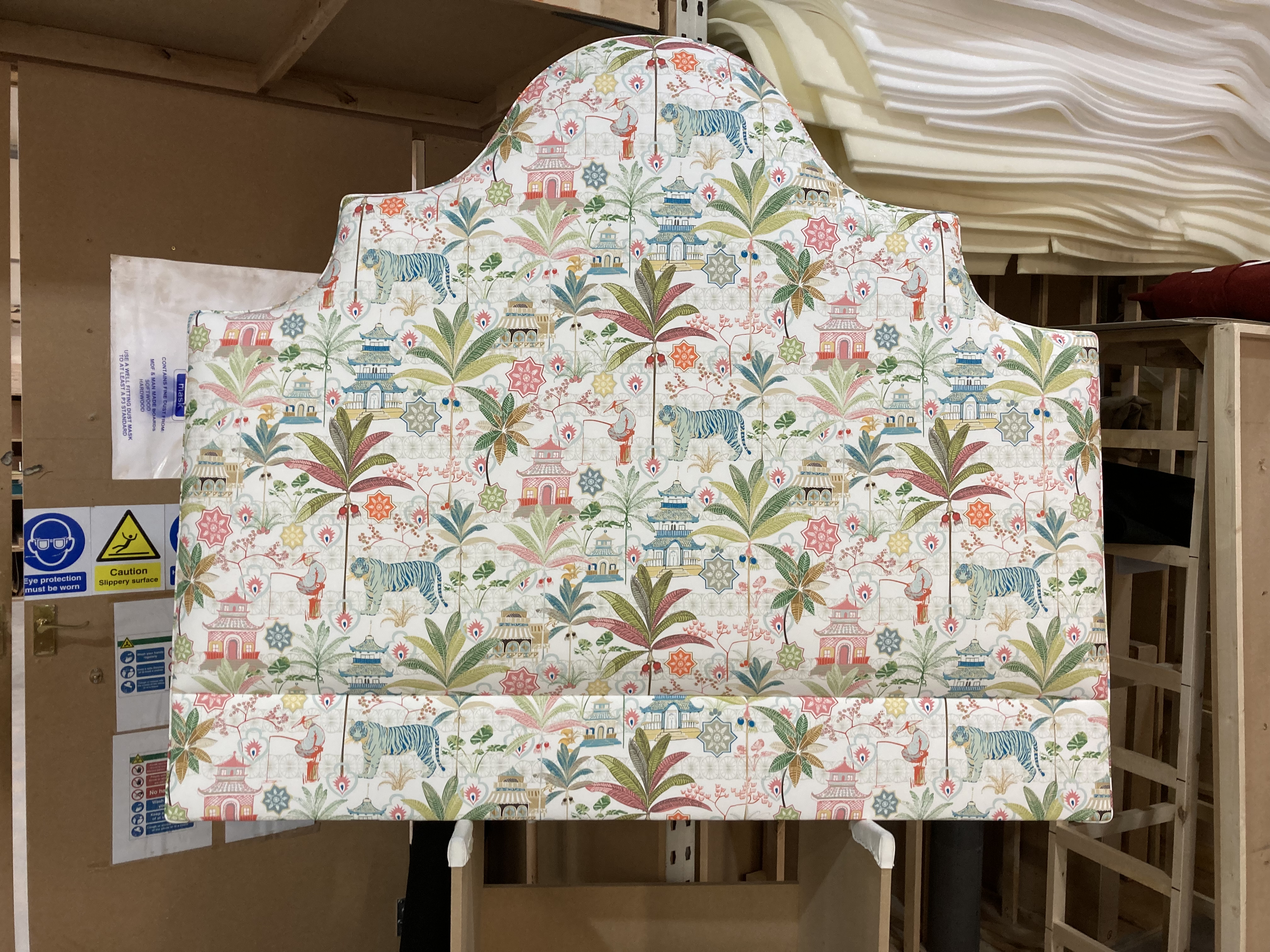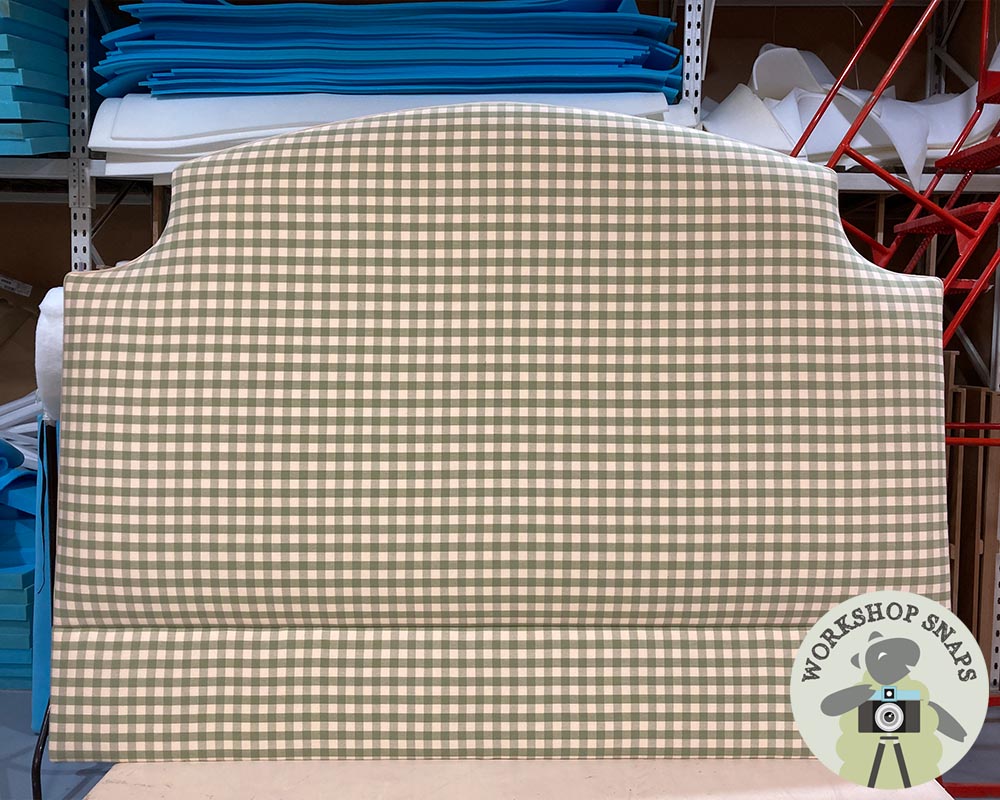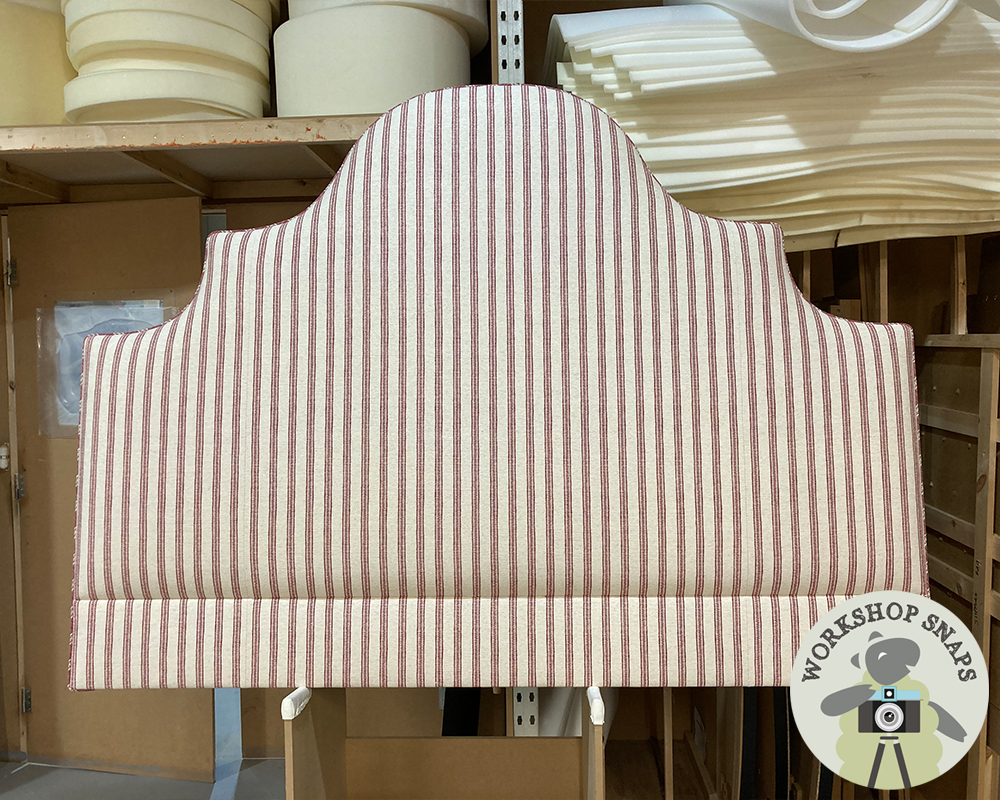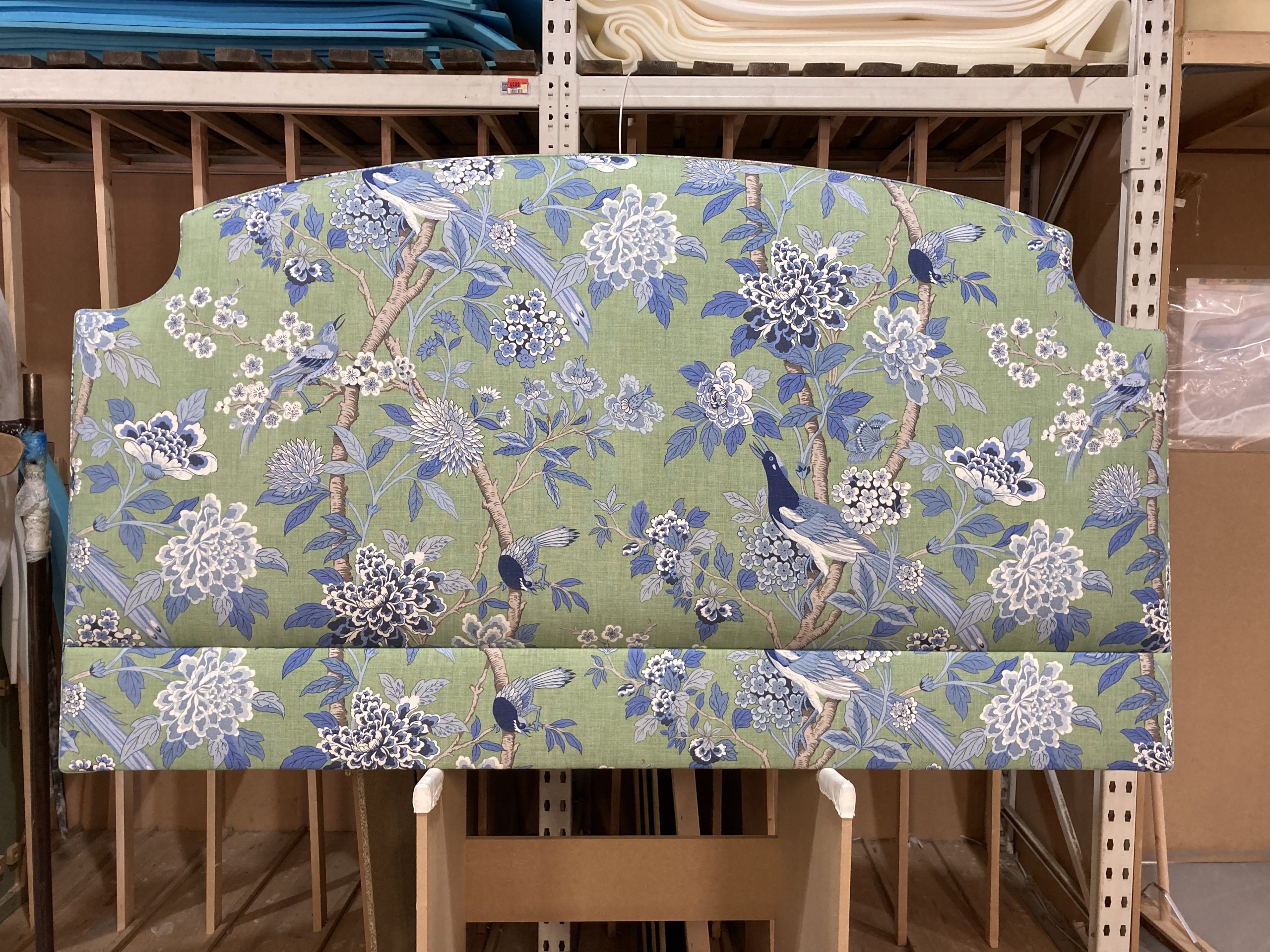When your material has a directional pattern and is not wide enough to cover your headboard, bed or valance, it must be joined. If your material is plain or woven and is non-directional, we can railroad the fabric to avoid seams.
This is where our expertise and eye for detail come into play.
In this guide we explain how we pattern match, why it is necessary and how to find out how much patterned fabric you can need for any of our models.
What is a directional pattern?
A directional pattern is one that must stay upright to make sense, ie, a tree. You would not wish to have a headboard where the trees pointed sideways instead of up and down. Similarly, some Ikat, geometric styles and florals, you will want to keep the orientation of the fabric running from top to bottom – this is how it usually comes off of the roll in a shop.
Sometimes, small independent fabric designers have the flexibility to ‘railroad’ print your material.

A fantastic example of a fabric that should stay upright and is fully directional.
What is a non-directional pattern?
A non-directional pattern is a pattern that has no clear top and bottom and looks the same if turned in any direction. A good example of this is a polka dot or a gingham check.
Plain fabrics are also non-directional.

A gingham check is a great example of a non-directional pattern.
Using stripes/checks
Most checks are non-directional and can be turned through 90 degrees to avoid joins.
With a stripe, you are able to choose which way you wish the stripe to run and we will confirm this with you when we receive your fabric at the workshop.

‘Half Drop Pattern Repeat’
A half drop repeat, repeats the pattern or motif diagonally. That is to say, the patterns don’t line up on the horizontal axis, they are staggered. As a full drop is always used down the centre of your headboard, and the extensions added equally to the outside edges on either side, this can sometimes make the feature motif on your headboard appear off centre.

A classic example of a half drop pattern repeat – This main motif of a peacock is not central to the main drop of material and is repeated diagonally higher up the headboard.








